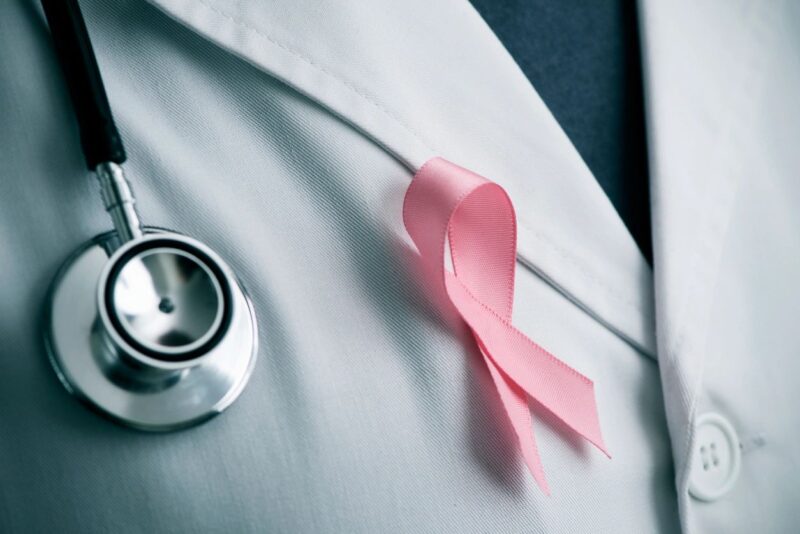Thanks to Big Data and other, recent technologies, cancer research is moving faster than it ever has before. This has led to many important developments in cancer treatment, improving individual patient outcomes, while hinting at a brighter future.
In this article, we examine some of the many ways that Big Data is improving cancer research, and the way doctors are able to serve people who have cancer or are at risk to get it.

Treatment Development
Big data provides a macro look at the development of treatment plans for cancer patients. From the moment a medicine is conceived to the time it finds its way to pharmacies many years can pass. Big data has the potential to shorten this window by rapidly taking and interpreting data from tests.
When scientists were still developing the first wave of vaccines to fight the coronavirus Big Data played a role in getting products out to the public very quickly. Typically, it can take years just to develop a vaccine. Once the product is finished, it takes to years of clinical trials to determine the safety of the drug.
For Covid, this wasn’t an option. Many factors contributed to the speed in which the vaccines found their way to the public, not least of which was a rapid production plan that saw billions of vaccines produced before the trials had even begun, and legislative efforts that allowed for an accelerated plan of development.
However, in the backdrop, data played its part, identifying solutions that were able to fight the virus, and expediting the development process.
This same process is applied to cancer research. Scientists now have more access to information than ever before. Using this knowledge, combined with machine learning, they can develop treatment options quicker than they were able to in the past.
It’s also worth mentioning that the way clinical trials are conducted for cancer research changed in 2021. It was then that the FDA announced cancer patients with incurable diseases would be able to participate in clinical trials.
Not only does this provide a reserved ray of hope for patients whose available treatment options have failed them, but it also improves researchers capacity to test the efficacy of new drugs in the most extreme cancer cases.
Democratizing Care
Big Data also helps to democratize healthcare, both for cancer and broader public health issues. In rural communities, for example, many towns may be many miles removed from the nearest hospital and serviced locally by only one or two physicians.
Big Data can Identify communities that are being underserved andPinpoint their risk factors. For example, is this rural factory experiencing a lot of cancer cases that are associated with exposure to pesticides? Or perhaps they have a local factory in town that is contributing to rising numbers of cases.
Using this research scientists improve their understanding of cancer risk factors, while also improving their potential to help previously underserved communities.
It’s now easier than ever to take data from rural communities thanks to the proliferation of wearable healthcare technology, and the increasing popularity of mobile health clinics, through which doctors can easily access areas that might not otherwise receive high-quality care.
Treatment Options
Usually, there are multiple ways a patient can treat their cancer. Historically, a good deal of guesswork has been involved in selecting the right one. The calculus typically involves accounting for the patient’s comfort, and their potential to recover.
Big Data can narrow the field of consideration by connecting patients with the treatment options that are most likely to improve their health based on preexisting factors.
Big Data and machine learning might pinpoint, for example, that young cancer patients do better with treatment X, while older, frailer patients thrive under treatment Y.
Not only does this help improve the understanding of cancer treatment over time but it also improves individual patient outcomes.
Cancer Risk Factors
Tobacco has been used recreationally for approximately 8000 years. It wasn’t until the mid-twentieth century that the Surgeon General linked smoking to lung cancer and other diseases—a set of facts that were not acknowledged by tobacco companies and much of the smoking public for another fifty years.
The modern understanding of tobacco and nicotine has only really existed for about thirty years. Naturally, politics played their part in delaying how people have come to understand tobacco.
Big Data can help ensure that it never again takes 8000 years to establish a connection that now seems obvious to most children. Data is, at its heart all about recognizing patterns and making it easier for humans to interpret them. Big Data can accomplish this with cancer risk factors by establishing connections between exposure to X and the development of Y.
This helps scientists better understand how cancer develops. It also helps patients avoid exposure to carcinogens.
Patient Participation
Big Data also allows scientists to better understand how patients are participating in their own treatment. Are they taking their medicine? How are they sleeping? Eating? The battle against cancer is a twenty-four-seven job. However, physicians are only with their patients for a small portion of that time.
Wearables and remote healthcare technology bridge some of that gap by taking data on patients’ activity while they are at home.
This can both help identify lifestyle factors that contribute to cancer recovery, while also helping course-correct patients who might not be making the right decisions to treat their conditions.
Conclusion
There are many exciting developments in medicine that carry significant potential. Robotics in surgery, wearable health technology, telehealth, and Big Data. Emphasis on the word potential. For now, it’s not clear precisely how these technologies will shape the future of patient care.
And yet, the possibilities remain enticing. For now, Big Data and other technological developments are improving outcomes, both for cancer patients, and the broader public. What potential it has on the macro level remains to be seen.


